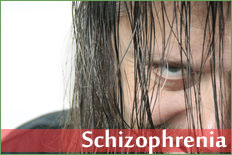Health Centers > Mental Health Center > Mental Disorders > Mood disorders > Mixed Episode
Mixed Episode
Episode Features
A Mixed Episode is characterized by a period of time (lasting at least 1 week) in which the criteria are met both for a Manic Episode and for a Major Depressive Episode nearly every day (Criterion A). The individual experiences rapidly alternating moods (sadness, irritability, euphoria) accompanied by symptoms of a Manic Episode and a Major Depressive Episode. The symptom presentation frequently includes agitation, insomnia, appetite dysregulation, psychotic features, and suicidal thinking. The disturbance must be sufficiently severe to cause marked impairment in social or occupational functioning or to require hospitalization, or it is characterized by the presence of psychotic features (Criterion B). The disturbance is not due to the direct physiological effects of a substance (e.g., a drug of abuse, a medication, or other treatment) or a general medical condition (e.g., hyperthyroidism) (Criterion C).
Mixed Episode
Symptoms like those seen in a Mixed Episode may be due to the direct effects of antidepressant medication, electroconvulsive therapy, light therapy, or medication prescribed for other general medical conditions (e.g., corticosteroids). Such presentations are not considered Mixed Episodes and do not count toward a diagnosis of Bipolar I Disorder. For example, if a person with recurrent Major Depressive Disorder develops a mixed symptom picture during a course of antidepressant medication, the diagnosis of the episode is Substance-Induced Mood Disorder, With Mixed Features, and there is no switch from a diagnosis of Major Depressive Disorder to Bipolar I Disorder. Some evidence suggests that there may be a bipolar "diathesis" in individuals who develop mixed-like episodes following somatic treatment for depression. Such individuals may have an increased likelihood of future Manic, Mixed, or Hypomanic Episodes that are not related to substances or somatic treatments for depression. This may be an especially important consideration in childrn and adolescents.
Associated Features and Disorders
Associated descriptive features and mental disorders. Associated features of a Mixed Episode are similar to those for Manic Episodes and Major Depressive Episodes. Individuals may be disorganized in their thinking or behavior. Because individuals in Mixed Episodes experience more dysphoria than do those in Manic Episodes, they may be more likely to seek help.
Associated laboratory findings. Laboratory findings for Mixed Episode are not well studied, although evidence to date suggests physiological and endocrine findings that are similar to those found in severe Major Depressive Episodes.
Specific Culture, Age, and Gender Features
Cultural considerations suggested for Major Depressive Episodes are relevant to Mixed Episodes as well. Mixed episodes appear to be more common in younger individuals and in individuals over age 60 years with Bipolar Disorder and may be more common in males than in females.
Mixed Episodes can evolve from a Manic Episode or from a Major Depressive Episode or may arise de novo. For example, the diagnosis would be changed from Bipolar I Disorder, Most Recent Episode Manic, to Bipolar I Disorder, Most Recent Episode Mixed, for an individual with 3 weeks of manic symptoms followed by 1 week of both manic symptoms and depressive symptoms.
Schizophrenia
A common and serious mental disorder characterized by loss of contact with reality (psychosis), hallucinations (false perceptions), delusions (false beliefs), abnormal thinking
Psychotic Disorders
Psychotic disorders are a collection of disorders in which psychosis ...
Mood disorders
Mood disorders are among the most common diagnoses in psychiatry ...
Personality Disorders
The majority of people with a personality disorder never come ...
Disorders of Childhood and Adolescence
Many disorders seen in adults can occur in children.
Substance-Related Disorders
Substance abuse is as common as it is costly to society...
Cognitive Disorders
The cognitive disorders are delirium, dementia, and amnestic disorders ...
Miscellaneous Disorders
Miscellaneous disorders does not refer to any official...
Course
Mixed episodes may last weeks to several months and may remit to a period with few or no symptoms or evolve into a Major Depressive Episode. It is far less common for a Mixed Episode to evolve into a Manic Episode.
Mood Disorders
- Mood Episodes
- - Major Depressive Episode
- - Manic Episode
- - Mixed Episode
- - Hypomanic Episode
- Depressive Disorders (Unipolar disorders)
- - Major Depressive Disorder
- - Dysthymic Disorder
- Bipolar disorders
- Bipolar II Disorder
- Cyclothymic Disorder
- Mood disorders with known etiology
- Mood disorders (for professionals)
Differential Diagnosis
A Mixed Episode must be distinguished from a Mood Disorder Due to a General Medical Condition. The diagnosis is Mood Disorder Due to a General Medical Condition if the mood disturbance is judged to be the direct physiological consequence of a specific general medical condition (e.g., multiple sclerosis, brain tumor, Cushing's syndrome). This determination is based on the history, laboratory findings, or physical examination. If it is judged that the mixed manic and depressive symptoms are not the direct physiological consequence of the general medical condition, then the primary Mood Disorder is recorded on Axis I (e.g., Bipolar I Disorder) and the general medical condition is recorded on Axis III (e.g., myocardial infarction).
A Substance-Induced Mood Disorder is distinguished from a Mixed Episode by the fact that a substance (e.g., a drug of abuse, a medication, or exposure to a toxin) is judged to be etiologically related to the mood disturbance. Symptoms like those seen in a Mixed Episode may be precipitated by use of a drug of abuse (e.g., mixed manic and depressive symptoms that occur only in the context of intoxication with cocaine would be diagnosed as Cocaine-Induced Mood Disorder, With Mixed Features, With Onset During Intoxication). Symptoms like those seen in a Mixed Episode may also be precipitated by antidepressant treatment such as medication, electroconvulsive therapy, or light therapy. Such episodes are also diagnosed as Substance-Induced Mood Disorders (e.g., Amitriptyline-Induced Mood Disorder, With Mixed Features; Electroconvulsive Therapy-Induced Mood Disorder, With Mixed Features). However, clinical judgment is essential to determine whether the treatment is truly causal or whether a primary Mixed Episode happened to have its onset while the person was receiving the treatment.
Major Depressive Episodes with prominent irritable mood and Manic Episodes with prominent irritable mood may be difficult to distinguish from Mixed Episodes. This determination requires a careful clinical evaluation of the simultaneous presence of symptoms that are characteristic of both a full Manic Episode and a full Major Depressive Episode (except for duration).
Attention-Deficit/Hyperactivity Disorder and a Mixed Episode are both characterized by excessive activity, impulsive behavior, poor judgment, and denial of problems. Attention-Deficit/Hyperactivity Disorder is distinguished from a Mixed Episode by its characteristic early onset (i.e., before age 7 years), chronic rather than episodic course, lack of relatively clear onsets and offsets, and the absence of abnormally expansive or elevated mood or psychotic features. Children with Attention-Deficit/Hyperactivity Disorder also sometimes show depressive symptoms such as low self-esteem and frustration tolerance. If criteria are met for both, Attention-Deficit/Hyperactivity Disorder may be diagnosed in addition to the Mood Disorder.
Criteria for Mixed Episode
A. The criteria are met both for a Manic Episode and for a Major Depressive Episode (except for duration) nearly every day during at least a 1-week period.
B. The mood disturbance is sufficiently severe to cause marked impairment in occupational functioning or in usual social activities or relationships with others, or to necessitate hospitalization to prevent harm to self or others, or there are psychotic features.
C. The symptoms are not due to the direct physiological effects of a substance (e.g., a drug of abuse, a medication, or other treatment) or a general medical condition (e.g., hyperthyroidism).
Note: Mixed-like episodes that are clearly caused by somatic antidepressant treatment (e.g., medication, electroconvulsive therapy, light therapy) should not count toward a diagnosis of Bipolar I Disorder.
References
- National Institutes of Health, National Institute of Mental Health. (n.d.). Statistics: Any Disorder Among Adults. Retrieved March 5, 2013, from http://www.nimh.nih.gov/statistics/1ANYDIS_ADULT.shtml
- National Institutes of Health, National Institute of Mental Health. (n.d.). Any Disorder Among Children. Retrieved March 5, 2013, from http://www.nimh.nih.gov/statistics/1ANYDIS_CHILD.shtml
- National Institutes of Health, National Institute of Mental Health. (n.d.) The Numbers Count: Mental Disorders in America. Retrieved March 5, 2013, from http://www.nimh.nih.gov/health/publications/the-numbers-count-mental-disorders-in-america/index.shtml
- Prevalence numbers were calculated using NIMH percentages (cited) and 2010 Census data. Census data is available at: United States Census Bureau. (revised 2011). "USA [State & County QuickFacts]." Retrieved March 5, 2013, from http://quickfacts.census.gov/qfd/states/00000.html
Daily Mental News
Post-traumatic stress disorder seen in many adults living with congenital heart disease
A single-center study from The Children’s Hospital of Philadelphia (CHOP) found that as many as one in five adult patients…


